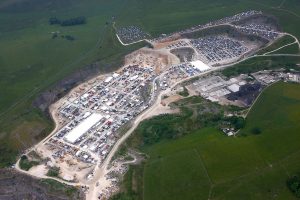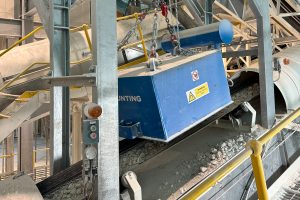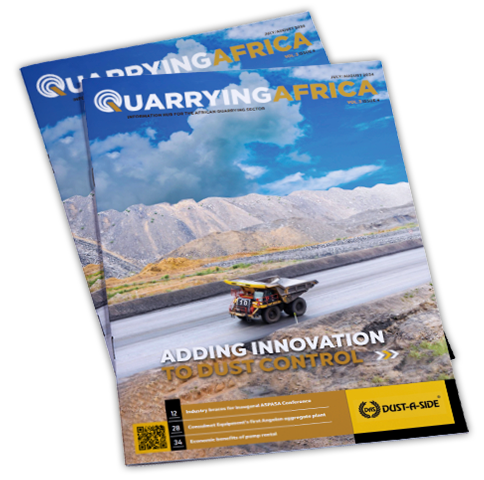Afrimat has released the findings of the Afrimat Construction Index (ACI) for the third quarter of 2022, highlighting the resilience of the economy and growth in construction sector activity.
The ACI is a composite index of the level of activity within the building and construction sectors compiled by economist Dr Roelof Botha on behalf of Afrimat.
According to Dr Botha, the resilience of the economy during the third quarter was also evident in construction sector activity, with the ACI outperforming the overall economy. The latest gross domestic product (GDP) data released by Statistics SA pointed to a real growth rate of 1,6% (quarter-on-quarter) for the economy as a whole, with the construction sector recording real growth in value added of virtually double this rate, namely 3,1%. The sector for transport, storage and communication was the only one to outperform the construction sector in the GDP performance between July and September.
The latter figure only includes the value added by contractors, whilst the ACI is based on a composite index of construction sector activity that includes another eight indicators. The ACI is a substantially more comprehensive barometer of the state of the construction sector, as illustrated by the fact that two of its indicators, i.e., the “Value of wholesale trade in construction materials” and “Hardware sales (retail)” amounted to a combined R69,3-billion in the third quarter, compared to a construction sector contribution to GDP of only R36,4-billion.
Botha points out that the ACI has now virtually fully recovered from the effects of the COVID-19 pandemic: “At an index value of 123.4, the ACI is now 23,4% higher than the base period, which was the first quarter of 2011),” adding that the ACI remains lower than its record high index value of above 140, recorded in the third quarter of 2016, a clear indication of the erosion of investor confidence that characterised the latter years of the state capture era.
Further scrutiny of the performances of the individual indicators confirms a reversal of fortunes from the second quarter of the “Value of wholesale sales of construction materials”, which was the star performer during the third quarter.
“This key indicator has increased by 13,3% to an all-time record high of R42,5-billion, quarter-on-quarter, in real terms. Together with a double-digit real growth rate quarter-on-quarter in the ‘Volume of building materials produced’, these two indicators ensured a hefty quarter-on-quarter growth rate for the ACI of 7,2%,” says Botha.
Botha is nevertheless concerned over the slow pace of recovery of gross fixed capital formation in the economy. “Although new investment in productive capacity by the public and private sector combined staged an impressive expansion of 5,5% from the second quarter and by 8,5% year-on-year in real terms, the third quarter figure of R239-billion is still more than 9% down on the third quarter of 2019.
“What is more disturbing is that capital formation in the third quarter only represented 7,1% of GDP, a far cry from the global average of 26% and not remotely adequate for a country with a population of more than 60-million people that is expanding relentlessly.”
Botha says that emerging markets such as Senegal, Chile, Croatia, India, Hungary and Mexico all enjoy capital formation: GDP ratios in excess of 20%. “Against the background of an expected tax revenue overrun of around R80-billion during the current fiscal year, it has become incumbent upon government to expedite expenditure on infrastructure – both for maintenance and for the expansion and improvement of network industries, especially energy, road and rail.”
He points out that the fixed investment category for residential buildings was the only one to have expanded in real terms on both a quarter-on-quarter and year-on-year basis during the period July to September, with non-residential buildings and construction works still in the doldrums. “Unless government provides significantly more fiscal resources for infrastructure development in the 2023 budget and addresses the delays in tender processes, the construction sector will remain relatively subdued,” warns Botha.
Commenting on the ACI, Afrimat’s CEO, Andries van Heerden, says he remains pleased with the conscious, defensive, and diversified position Afrimat finds itself in, which has protected the group from the overall deficiency of activity in the construction sector.
“Our roots in quarrying enabled a vast footprint across South Africa, with pockets which support building and construction, but without active infrastructure and building spend, the sector continues to lag. Thus, diversification into Industrial Minerals, Bulk Commodities and Future Materials and Minerals, combined with the steadfast execution of growth drivers, has enabled Afrimat to pivot in critical times to ensure sustainability and strong cash generation to support acquisitions.”
He acknowledges that load shedding, poor Transnet performance and political uncertainty detract from the country’s growth. “Fortunately, we have been able to counter this through foreign exchange earnings and new growth projects such as the Nkomati Anthracite Mine and the implementation of the Glenover phosphate, vermiculite and rare earth elements project, which aligns with the global trends of decarbonisation, technology advancements and food security”.
Van Heerden adds that all these measures, dedication to implementation and a cost-conscious mentality enhance the Afrimat diversification strategy.
In conclusion, van Heerden acknowledges that South Africa is a more complex environment to work in. However, he believes that every crisis presents an opportunity for potential disruption. “We evaluate many opportunities and will continue to ensure sufficient moats in future acquisitions and that these acquisitions fall within our core competencies.”





![Data from the World Risk Poll shows that one in five (21%) people in mining and quarrying occupations have experienced harm at work in the past two years. [Photo by Shane McLendon on Unsplash]](https://quarryingafrica.com/wp-content/uploads/2024/10/shane-mclendon-89hUOLtVfoI-unsplash-300x225.jpg)
